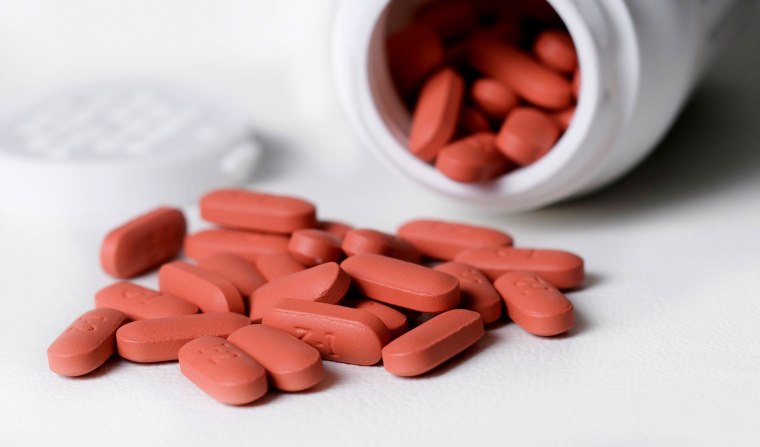Too many Americans are ignoring the labels on over-the-counter pain medications and that's leading to some serious health problems, according to a new report based on surveys of consumers and gastroenterologists.
A large percentage are taking the drugs at higher doses and for longer than the labels advise.
In fact, 43 percent of chronic pain sufferers surveyed said they believed that the directions on the labels of OTC pain medications were really just “guidelines.” The same percentage said they knowingly had taken more than the recommended dose at some point.
Related: Heart warnings on painkillers like ibuprofen raised
The problem with these attitudes towards OTC pain medications, which include aspirin, acetaminophen, ibuprofen, naproxen sodium, is that overdoses can lead to serious complications, such as intestinal and stomach damage, liver and kidney problems, experts say.
“People think if they can buy something at the drug store it’s safe and can’t hurt them,” said Dr. C. Mel Wilcox, a coauthor of the new report and a professor of medicine at the University of Alabama, Birmingham. “But it’s not true that OTC equals safety.”
More information on OTC pain medications
People can get into trouble taking higher than recommended doses or when they inadvertently take two medications that contain the same drug, which can result in doubling the dose. People can also get into trouble taking the recommended dose for long stretches of time.
Related: Can I take even 1 pill? Your questions about OTC painkiller heart danger
“If someone is really healthy and is working out but perhaps has low back pain, then NSAIDs [non-steroidal anti-inflammatory drugs] at the standard dose are probably safe,” Wilcox said. “But that person might develop problems later on as they get older. They might develop kidney problems, for example, and then the drugs are going to have more potential side effects.”

Some of the study’s major findings:
Chronic pain is a big problem: it was reported by 44 percent of the consumers surveyed, with 27 percent reporting back pain and 17 percent knee pain.
Most, 66 percent, of those with chronic pain had been dealing with it for two years or more.
Among the chronic pain sufferers who had taken an OTC pain medication during the past year, 79 percent reported they had simultaneously taken a multi-symptom OTC medication for allergy, cold, or flu relief, which could have led to a doubling of the dose of the pain medication.
More than a quarter, 27 percent, of those with chronic pain say they are willing to take more than the recommended dose because they incorrectly believe their symptoms will ease more quickly.
Gastroenterologists see patients who have experienced complications due to OTC pain medicines, many report that the patients always/often tell them they wanted to feel better faster (73 percent) or their ability to get relief requires more than the recommended dose (45 percent).
There are often signs when you’ve taken too much of these medications, said Scott Drab, an associate professor of pharmacy and therapeutics at the University of Pittsburgh School of Pharmacy.
For NSAIDs, Drab said, early symptoms can include:
Heartburn
Vomting
Stomach pain
Later on, you might start to see:
Bloody vomit
Blood in the stool which will result in a black, tarry appearance
“As it gets worse you can get ringing in the ears, blurred vision and sometimes difficulty breathing,” Drab said. “And the worst case scenario is confusion, seizures and coma.”
The symptoms that accompany an overdose of acetaminophen are different. In the first 24 hours you might experience:
Nausea
Vomiting
Stomach pain
Loss of appetite
Since acetaminophen generally doesn’t upset your stomach, these GI symptoms should set off alarms, Drab said.
As time passes, the signs of liver toxicity may appear:
Pain in the upper right side where the liver is located
Darker urine
Less urination than usual
A yellowing of the skin and whites of the eyes
Eventually, “people can get blood in the urine, have trouble breathing, become weak and fatigued and experience blurred vision,” Drab said. “Further out you’ll see confusion and then coma.”
Ultimately, the best way to avoid problems is to keep your doctor in the loop, and include OTC drugs when listing medications you’re taking, Wilcox said.